I love basil. Many of you already know that I’m Italian and we use basil in a lot of recipes, especially with tomato sauce, for example on pizza.
Anyway, this is not a cooking blog so we are not going to talk about the recipe but about this beautiful aromatic plant.
As you probably know, basil has a relatively short growing season. A lot of people bring the basil pots inside once the temperatures drop, but this is not the only good solution.
To grow basil even under difficult conditions, you need to prune, and you need to do it right.
My nonna taught me this many years ago, and now I’ll show you how to prune basil so it grows forever (or, you know, forever-ish).
5 Simple Steps
Although there would be a lot to say I want to keep this guide fairly short and simple, so I have identified 5 key points.
They are simple and ideal even for beginners, so follow them carefully.
1. Get Your Timing Right
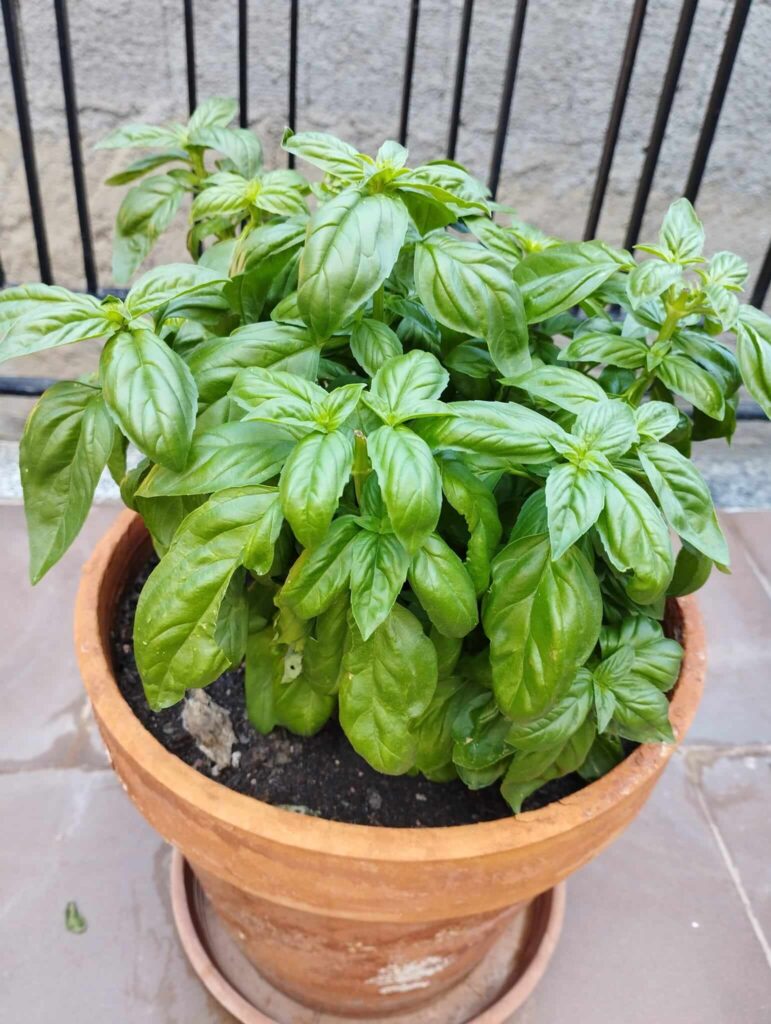
Let’s start with the time that is crucial. The best time to prune is when your plant is about 6 inches tall. It should have 3–4 sets of leaves by then.
If you start trimming late, you’ll end up with a leggy basil, and if you start too soon, you might stunt the plant’s growth.
After the first prune, you can keep doing it every two to three weeks, or more often if the plant is growing quickly (it’ll grow fast if your area is warm and sunny).
2. Find the Perfect Spot
The second thing (perhaps the most difficult) is to figure out which parts of the plant to remove. Well, you always want to pinch central stems right above the node.
Just look for the highest point on the stem where two leaves grow in opposite directions. The base they’re growing from is the node, and you should cut about 1/4 inch above it.
This way, you’ll force the basil to branch once more at this specific point, creating a new set of leaves.
3. Pinch (Or Snip) Gently
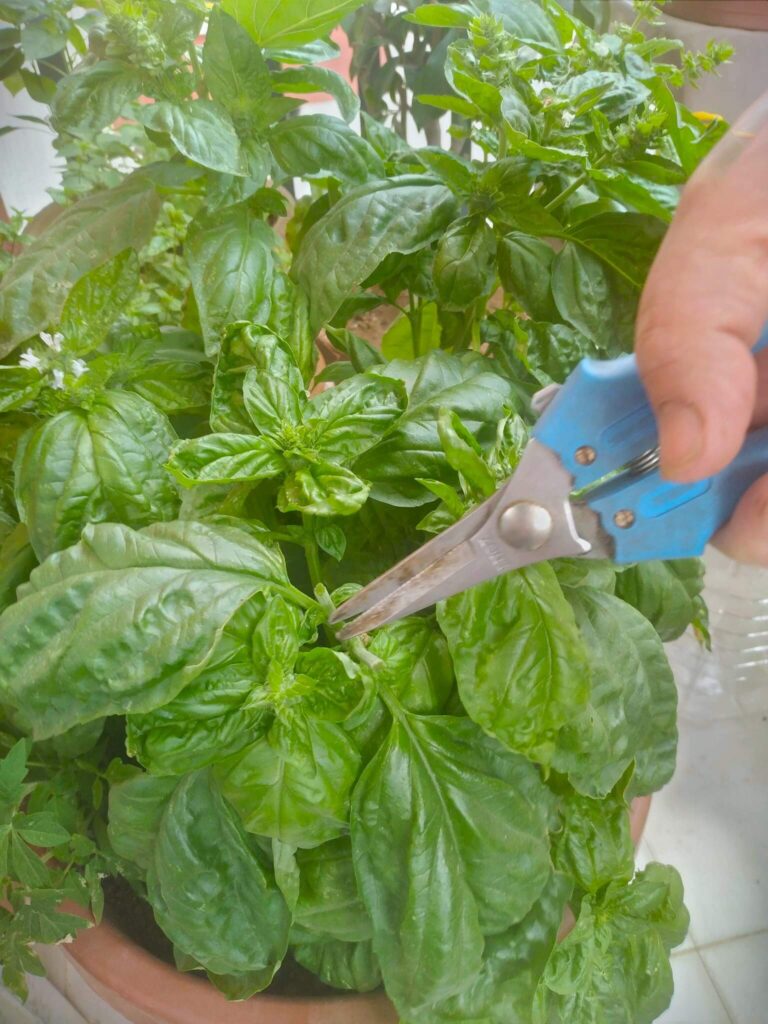
Basil stems are so thin that you can easily cut them off with your fingers. But if you want to be super accurate with your cuts, use a pair of herb scissors.
Always remember that the scissors should be clean, plants can get infections just like when we cut ourselves with something dirty.
Me? I’m a simple guy who pinches basil stems with his thumb and index finger. I think it’s the easiest way or I’m just used to that…I don’t know!
4. Check the Basil Again in a Week or So
Pruning basil is so easy, but it needs consistency. As I was saying before, you’ll need to do that again in a couple of weeks, depending on how fast your plant is growing.
The process is still mostly the same, though. Find a main stem that branches into two leaves, snip above the node, and repeat as needed.
Don’t be scared to “aggressively” harvest your basil. You can chop off up to a third of the stem in one pruning session!
PRO TIP: Oh, and if you see any dead/dying leaves, don’t hesitate to pinch them off. They’ll only waste the plant’s valuable resources.
5. Deflower (If Needed)
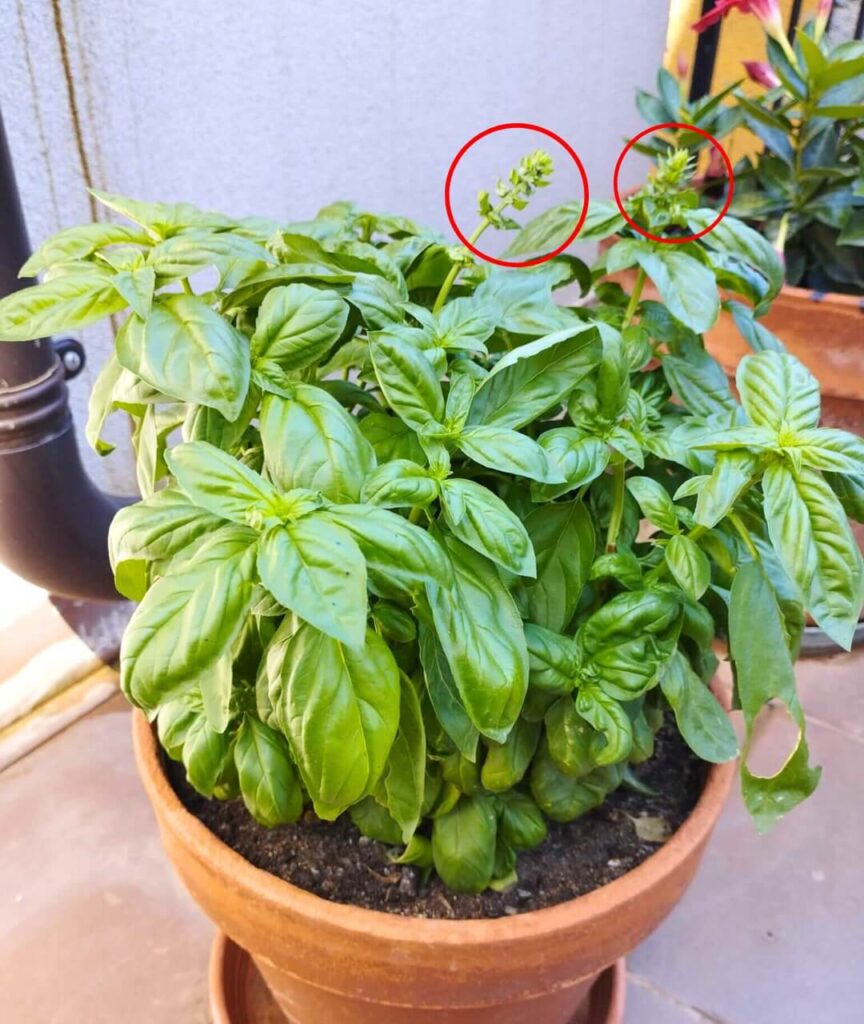
Your basil plant could flower around mid to late summer. While those buds look incredibly pretty, they need to go.
Firstly, they take energy away from the foliage. Secondly, they can actually make the leaves bitter, or at least that was what my nonna used to say, I don’t know for sure because I remove the flowers right away.
GARDENING EXPERT: Only expert gardeners know this, but the flowers don’t have to go to waste. You can brew them. Or if you love salad, you could infuse them in vinegar to make your own dressing.
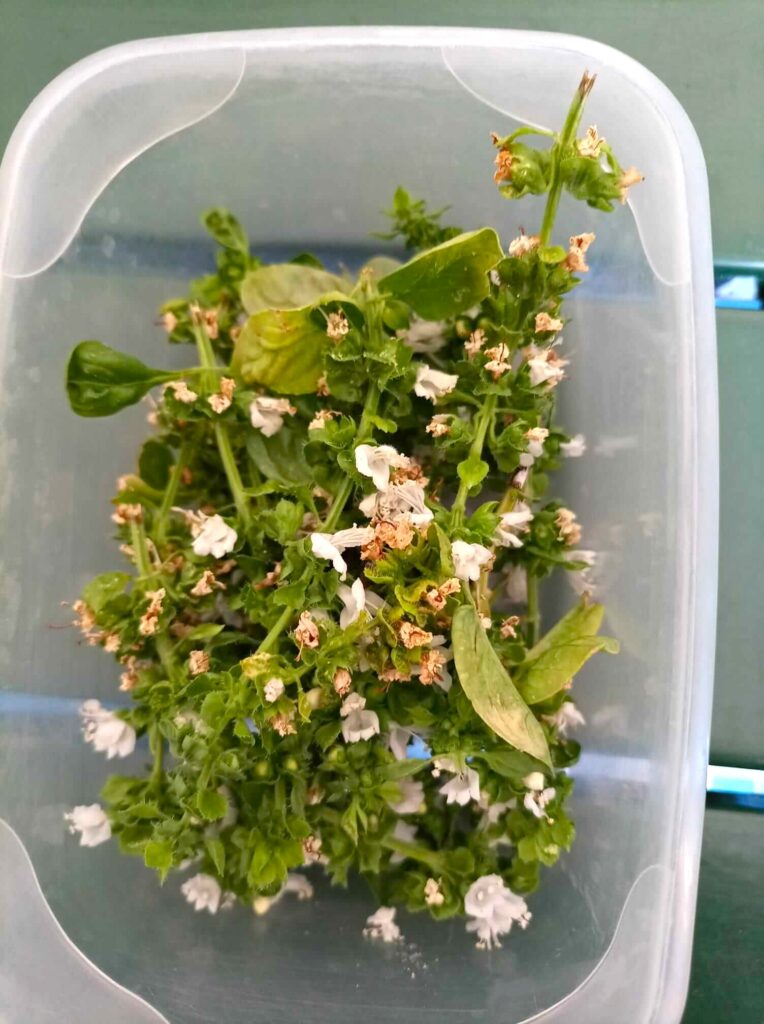
Tips for an Even More Productive Pruning Routine
Now that you have the basics covered, you’re ready for two additional tips.
Store the Pruned Basil Leaves for Months
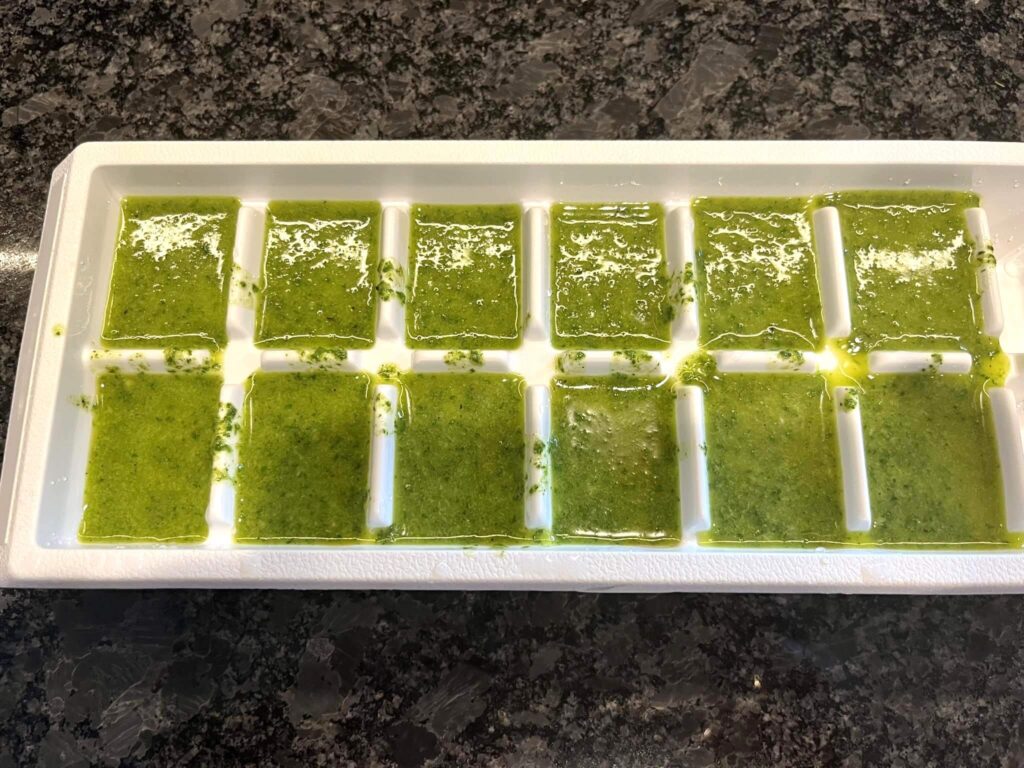
This is never a problem in my household (read: Italian cuisine). However, if you’re harvesting more basil than you need, consider freezing some of it for later. My mom and grandma always do this at the end of the summer.
Prune as usual and chop the basil leaves. Place whole basil leaves in an airtight container in layers alternating with baking paper or foil. Put in the freezer and take the leaves when you need them.
As an alternative, you can blend the chopped leaves with just enough water or olive oil to make a pesto-like consistency and scoop paste into an ice cube tray and pop it in the freezer.
In both cases (if frozen) they should be good for about six months.
Clone Stems
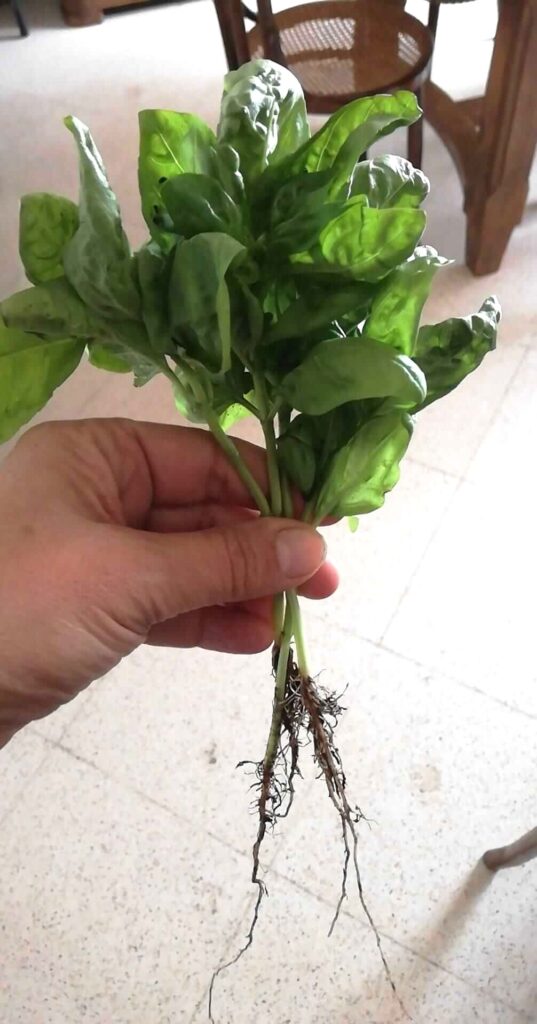
If your plant is getting really bushy, you can prune the plant heavily and clone the best of the cuttings.
Look for a pruned stem section that’s 4–6 inches long and remove the foliage from the bottom third.
Then, drop it into a glass of filtered (or dechlorinated) water to root. Change the water every couple of days and wait until the roots are about an inch long before potting.
The new small plants can also be a perfect gift idea. If you’re really short on time you can also take a look at veggies that grow in about 30 days.

